Matt Kaness: CEO of Goodwillfinds
Episode 392
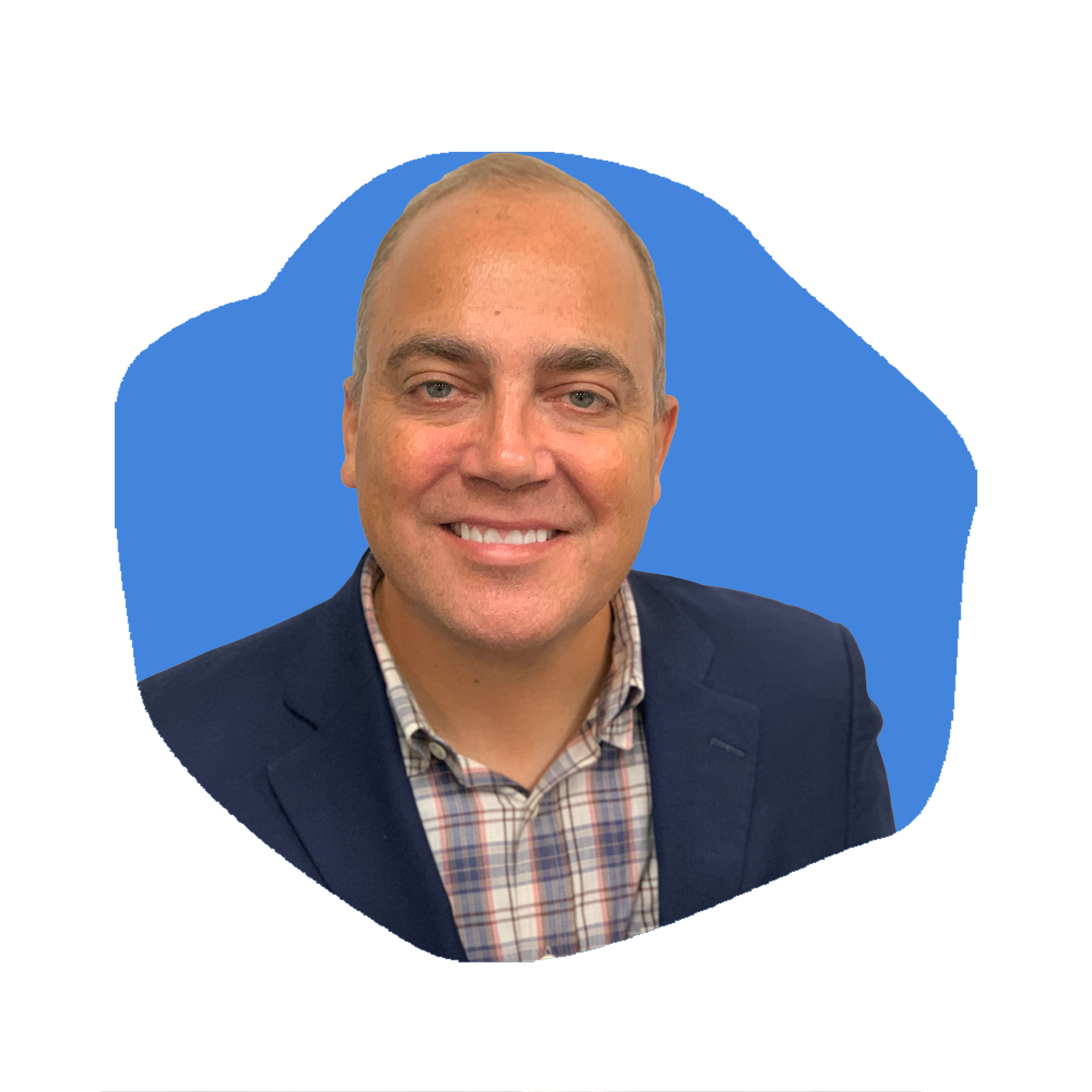
Matt Kaness, CEO of Goodwillfinds, is with us today to share what it means to build out a new social enterprise and ecommerce marketplace that extends from a brand that we are all familiar with. Goodwillfinds extends Goodwill’s mission by creating social impact through the power and dignity of work with sales that will directly benefit the communities from which the items were sourced and fuel local programs for workforce development and job training. You are going to love hearing more from Matt about this socially and environmentally conscious business model. Plus, be inspired by his journey, great insights and lessons. On this episode of #TheKaraGoldinShow.
Resources from
this episode:
Enjoying this episode of #TheKaraGoldinShow? Let Kara know by clicking on the links below and sending her a quick shout-out on social!
Follow Kara on LinkedIn – Instagram – X – Facebook – TikTok – YouTube – Threads
Have a question for Kara about one of our episodes? Reach out to Kara directly at [email protected]
To learn more about Matt Kaness and Goodwillfinds:
https://www.linkedin.com/in/mattkaness/
https://www.goodwillfinds.com/
https://www.linkedin.com/company/goodwillfinds/
https://www.instagram.com/goodwillfinds_/
https://www.tiktok.com/@goodwillfinds_
Transcript
Kara Goldin 0:00
I am unwilling to give up that I will start over from scratch as many times as it takes to get where I want to be I want to be,
you just want to make sure you will get knocked down. But just make sure you don’t get knocked down knocked out. So
your only choice should be go focus on what you can control control control. Hi, everyone and welcome to the Kara Goldin show. Join me each week for inspiring conversations with some of the world’s greatest leaders. We’ll talk with founders, entrepreneurs, CEOs, and really some of the most interesting people of our time. Can’t wait to get started. Let’s go. Let’s go. Hi, everyone, it’s Kara Goldin from the Kara Goldin show. And I am so excited to have my next guest here who is also a friend. So if there’s a little bit of, of familiarity in our conversation, then you’ll know why. But we have Matt Kaness. Here, who is currently the CEO of Goodwill finds and goodwill finds is a new social enterprise and ecommerce marketplace that extends Goodwill’s mission by creating social impact through the power and dignity of work. And Matt has been tasked with creating the social enterprise and big, big, big, big endeavor, under a license with Goodwill Industries, which we all have heard of. But sales will directly benefit the communities from which the items were sourced. And they’ll fuel local programs for workforce development and job training. So who doesn’t love that, of course, and I can’t think of a better person to spearhead this. And I’m super excited to hear a lot more about it. So welcome,
Matt Kaness 1:52
Matt. Amazing. Thanks, Karen. I’m so excited to be here with you.
Kara Goldin 1:55
Super excited. So before we jump into a lot of other stuff, just at the top, I’d love to hear what is goodwill finds.
Matt Kaness 2:06
Dual finds is a new two sided marketplace. So we are partnering with the goodwill network, which is comprised of 155 independent franchises that share the goodwill mission and brand that today sell ecommerce mostly as a third party seller in Amazon and eBay. We are building for the first time a platform that unifies a catalog of all of their e commerce items into one marketplace, for consumers to shop from across the country that is completely pioneering for the goodwill network. It’s very much a new venture for this 120 year old, mission based organization. And I’ll just share we launched in October, and the response has been off the charts, I like to say that goodwill is a love brand. When you hear the name, it makes you think about the experience you had or a moment of your life. And we’ve been very fortunate that we’ve been able to partner with the global network and leverage the brand to have quite a bit of success since the launch in October.
Kara Goldin 3:26
So did you ever think that you would have a role like this where you are we’re not only helping other companies to have a better footprint, but also create more jobs and help communities? Was that ever a goal of yours?
Matt Kaness 3:41
No, in fact, I feel like this is in some ways, the manifestation of everything I’ve ever done. And at the same time, completely new chapter of something that I get to write as we’re doing it. I’ve been very fortunate in my life that I for whatever reason, have had a lot of self awareness of what I’m doing. And when I found retail in my 30s fashion in particular, I just I fell in love with it. I fell in love with the idea that you could create this brand that people care about that creates community. And I’ve been on this 20 year heater professionally, where I keep finding these amazing opportunities to work at love brands and lifestyle brands that that people really care about. And the best part about it for me is I get to operate within these companies and work with some of the most talented professional, creative people I’ve ever met in my life. And when I was presented with this opportunity last year a couple of things jumped out to me. The first is the mission of goodwill. My older brother was born with a handicap. I’ve watched him go on and off disability isn’t Our adult life. And so when they presented this to me, and the idea that Goodwill’s mission is to improve lives through our and dignity of work, I’ve lived that with my older brother my entire life. I understand personally, why the mission is so important. And then when you couple that with this really unique moment in retail, where resale is kind of crossing over into the mainstream, and there’s this massive opportunity to innovate and grow within a market that is pretty tepid, right now, economically, that got me really excited to be able to come in and build something new. And then the last thing I’d say is, you know, putting that together, and thinking about what is the impact that resale has in the world with respect to sustainability? It was just one of these unique opportunities. I was like, wow, like, how could I not do this?
Kara Goldin 5:57
Yeah, you needed to listen a little closer to the recruiter on this one, for sure. So you touched on this, that you didn’t actually go into fashion until you’re in your 30s. So you were you started out in engineering and patent law. Wild, I did not know that you were an attorney to So learn something new. So about that friend. So that’s amazing. So how did you end up in Fashion and Retail,
Matt Kaness 6:24
there was a combination of luck and just continuing to find my own limits, and say, This is not for me, I have to go on to the next thing. I like to joke that if I ever write a memoir, it’ll be called patent law to patent another.
Kara Goldin 6:40
I love it.
Matt Kaness 6:41
I love it. Mike, my dad was an engineer, my mom was a computer teacher. So I went to school for engineering. And after a couple of summers of doing it realized I’d be a terrible professional engineer. I just didn’t have the passion for it. And so after deciding that I wanted to go to law school, but not being able to afford it, I found an opportunity, the patent office, where they pay for it when you go at night, and I worked with enough patent attorneys to realize that that wasn’t for me, I’ll just say that as nicely as I can, that that wouldn’t be where my passion lied. And I had a good friend from high school who went to get his MBA up in Boston. I’d never heard the acronym MBA before my mid 20s. and wound up getting the opportunity to study at UVA, which I loved. And then from there, a couple of stops until I found the lane that I’m in now, which was a very lucky, gratuitous timing of a project that I got assigned to at Burt snowboard up of Vermont about 20 years ago. And I’d like to say that consultants typically don’t work with great companies, because great companies don’t need consultants. But this was an outlier where it was this amazing brands that was growing 50% year over year, but making less money, and had to bring in outsiders and figure out why. And that was the project that I was given. And after doing that for a couple years, I was like this is what I want to do with my career. And so that’s what led to the opportunity to watch your next which is that Urban Outfitters, and I’ve kind of been in the space ever since.
Kara Goldin 8:24
That’s amazing. And obviously it wasn’t just Urban Outfitters. They have a few other brands under neath that umbrella too. So you’re being very, very modest about it. And you and I met when you joined ModCloth. So you’ve done some really, really interesting things along the way. And really aspirational brands too. And I mean, you’ve sort of covered all the different generations, the Gen X, the millennials, the Gen Z years, you know, it’s just it’s really, really interesting. So can you share more about the business model for Goodwill finds? I’d love to hear kind of how you. It’s not just individual consumers that you’re working with, but you have a whole other group that you’re working with as well. Correct?
Matt Kaness 9:11
Yeah, so I’m a lifelong student. Okay. I just it’s following curiosity is one of my first principles. And I’ve never worked in retail before. So I’m, I’m studying the industry while we’re building this new platform. And one of the things that I’ve learned is that there are different business models within the resale category, you have the Manage marketplace model, which real real and threat up are two examples where they take possession of the inventory, and then they sell it on consignment, and then the seller gets a percentage after the fact. And then you have the peer to peer model, which is like Depop and Poshmark. where they’re really create an Etsy kind of pioneered this where they’re creating tools for sellers to build out their storefronts and then helping them to aggregate their audiences, but they’re really more on the software layer. And driving tools is more of a technology venture then then the managed marketplaces that have physical showrooms and warehouses and etc. And then there’s the b2b to see model, which is what we’re building out, which is more akin to, to Amazon and eBay, where you have partners on the one side that are selling goods, and then you have consumers on the other side where you’re, you’re aggregating up the supply and selling it to them, specifically for us that goodwill finds. We like to think that this model we’re building is pioneering circularity in retail. So I’ll explain that for the consumer. When you’re thrifting at a Goodwill store, or an area stores at the drive around each location where you’re shopping with for thrifting online, you’re going to different websites like an eBay or an Amazon or some regional marketplace, and you can’t shop it all in one location. We’re bringing the best of thrift from Goodwill’s across the country into one shopping experience. So as a consumer you can thrift in Seattle, Miami, Chicago, LA, and we’re adding more Goodwill’s by the month here, we watch with 40 Goodwill’s, we’re now, over 10, we’re targeting to have 25 or more by the end of this year. There’s 155 Goodwill’s, so we’re hoping over time that we add all of them. And so we’re we’re massively aggregating supply right now. And that’s a huge win for consumers. Because we’re making it super easy to thrifts from all across the country. For goodwill, we’re giving them a new selling channel that didn’t have so that they can accelerate their e commerce growth, which allows them to capture more margin on the items versus what they are able to capture when they sell it through their stores, or sell it through a third party marketplace. And that margin directly funds, their social services and their mission programs in their local communities. And then all of it resell, including us, takes all these items that would go into landfills, and keeps them circulating in the economy. And so when you put that all together, good for consumers, good for the planet, good for local communities. And so we’re building something, I think that’s unique within resale. And it’s something that we hope will be a platform that will kind of lead the goodwill network through a digital transformation to allow them to compete for the next 120 years
Kara Goldin 13:02
is so just so I understand this, so are you curating from the whatever shows up in each of these Goodwill stores.
Matt Kaness 13:10
So Carrie, you go to your local Goodwill, and you drop off donations at your local Donation Center, they have a process where they sort out what items are better for EECOM versus stores, the items that are pulled out for E Comm, then get curated and prepare for listing on all the various marketplaces, including ours. And then the more success we have, obviously, those members are going to give us more of their ecommerce items. And then the better job that we do, we’re able to then help them pull out more items from the store because they can’t capture as high of a price in store where you’re selling to just local traffic counters on online, which is obviously the theory of the commercial Internet is one to many versus one to one that happens in spades. What’s been a challenge for decades for resale is it hasn’t been cost effective to do secondhand because every item is a one off. Right. But given the fact that goodwill already has these operations, and given the fact that technology has evolved, where the cost of listing and selling an item has dropped dramatically compared to 10 years ago, we can actually do this profitably.
Kara Goldin 14:27
That’s amazing. So are you actually so will they actually pick and pack at each of these individual stores for you and send it out from there?
Matt Kaness 14:36
Yeah, so we’re totally decentralized operations. We are building our platforming and deploying software around their existing operations. Okay, so listing, catalog management, warehouse management, and then pick pack and ship are all enablement that we’re able to deploy at And then we’re building out a proprietary data warehouse data lake that allows us to capture all of the one PII data that they’re not able to capture in other platforms, which anybody in E commerce and marketplaces understands the importance of that around, driving personalization around, retention marketing around, extending lifetime value. And then, over time, what we’re hoping to do is to really integrate our platform into their in store, customer experience and point of sale, so that we can start to convert shoppers to donators, digitize donations, receipts, and then convert donators to shoppers. And to do that in a multi channel way so that folks coming in the store, begin to shop with us online and folks that discover goodwill through our marketplace that Google finds, we then can convert to be store shoppers in their local communities.
Kara Goldin 15:56
So interesting. And then in addition, let’s say that XYZ retailer has a bunch of returns that are not going to make it out on the floor, say it’s like past the season, or there’s not enough of them. And they know that they’re going to end up in deep, deep discounts, that this is an opportunity rather than actually ending up in landfill, as you’ve described, they can put these, you know, bulk down, well, small donations, but also bulk donations to you all correct.
Matt Kaness 16:25
Yes, and carob. So happy that you brought that up, because the the one of the things that have been really gratifying for me, since I joined this denture has been not just the consumer response and the industry response, but friends of mine, who have reached out from the industry. And in a way, I love what you guys are doing. Tell me more about it. And I won’t mention who because obviously conversations are confidential up to this point. But we’ve had both retailers and brands reach out to say we want to partner with you. And I’ll give you a couple of examples of why. On the retailer side, they’re selling new goods from brands. And their customers are shopping for the same brands used at other marketplaces, and retailers can afford to lose their customers to somebody else’s point of sale. So the same way that you go to an Amazon today and you buy a book or media or an electronic and in the checkout flow, before you buy it to give you a used option. 10 years from now, that’s going to be unbelievably common in every mass merchants, online customer experience, where you’re going to be given the opportunity to buy something new, and then shown an option to buy the same or like items secondhand for a cheaper price. And so retailers, especially ones with marketplaces, are starting to experiment with that of like, how do we integrate used goods under the same brand banners in the same shopping experience with new items from those brands? So we’re having some conversations with some of those mass merchants now, where we could expose our catalog and cross list not just on our marketplace, but in their environment. And then on the brand side, which is what you brought up. We’ve had brands reach out to us and say we want to have a third party that we can trust to be the objective place where we can send our our over buys or returns or damages to it not give it to jobbers that then put off overseas and it goes into landfill somewhere. But we we want these items to get recirculated. But some of these for profit marketplaces. Yeah, there’s a little bit of a conflicting objectives. And so they see us as almost Switzerland, because we’re nonprofit, because we’re a platform where we’re selling donations, we, I envision that we’ll have goodwill five.com backslash brand name, where we’ll be selling the the returned items for big brands commingled with donations from those same brands and the same shopping experience for consumers. And I think this is going to happen for a couple of reasons. One is that there’s a lot of ESG pressure from investors on a lot of these bigger brands that are public as to what’s their ESG strategy. But to Gen Z, the younger consumer, they’ve completely taken the stigma off of secondhand. And when they do buy new, they want to know about the values and the ethos of that brand. And over time, they’re going to be asking what are you doing with all your over buys and retailers? So it’s it becomes brand enhancing to certainly partner with goodwill finds at the tail end, not just we sourced ethically on the front end, but we dispose of ethically on the back end. So that’s another kind of like as I think about the industry too. 10 years out, I think that’s gonna become more commonplace.
Kara Goldin 20:03
So, so interesting. So I’m curious to like you mentioned giving you know these returns or damaged goods to like jobbers. For example, giving it to Goodwill finds to actually sell. I wonder if there’s any type of right off there as well, because you guys are a nonprofit.
Matt Kaness 20:23
I mean, we can give a tax receipt as well. Yeah,
Kara Goldin 20:26
really, really interesting stuff, for sure. So goodwill is not a new brand. And you are tasked with making an old brand trendy even though it’s a different name, but people hear the name goodwill. And I think it’s, it’s definitely a positive. But when you say goodwill fines people are like, Wait, what is that? And so they’re willing to look at it a little more. And obviously, it’s, you know, you’re tasked with making this old school, what 100 year old brand, I’m guessing on the age of that but trendy, and having a kind of positive effect and ESG helper for many, many people as well. What’s the first step in changing any stigma attached to an old brand, given how much experience you’ve had out there and retail?
Matt Kaness 21:23
Well, I’ve been unbelievably fortunate to work at some amazing brands. And so for me a lot of it is just relying on my experience working at a Burton Snowboards and Urban Outfitters anthropology free people. And you know, that’s a decade plus for me, being in the four walls where you just, you know, people get it or they don’t they understand what we’re doing with this brand, or they don’t in it. Some of the stories I like to to point to Wall Street would ask Urban Outfitters Why is it anthropology selling men’s and kids like J Crew and Banana Republic? And we’re the response to be like, you don’t get the brand blade to customers trying to she’s trying to escape her obligations when she shops in anthropology. Why would we remind her of that? In the store environment? Bert snowboards it was all about the rider. And so it was just about the skate park kid getting his driver’s license, and not wanting to hang out with the skiers on the mountain. And like that’s the kid who became Shawn white, that sport. So as he kind of an urban, you know, Urban Outfitters is the art school kid who was never, you know, at the football games in the pep rally and needing a place to like hanging out that was their own. So for me, for whatever reason, I’ve been able to intuitively kind of connect to who’s the customer and what are we trying to do for her or him. So I get to ModCloth right away. And you ask the question, how do you do it? First step is to talk to people internal, right? Like, how do we think about the brand and the customer? But also what words are we using? When I got to mod cloth, there was a big debate about reg size versus plus size. And going back to 2014 15. It was pretty pioneering at the time to be using plus size models. And we were one of the first there. And then through conversation. It was just obvious to me that we were we were revolutionising inclusive fashion. Like that’s what we were doing. There’s a saying I learned from decaying that great brands have a narrow focus on wide appeal. And I felt like mod cloth had this amazing, narrow focus on serving their community. But there wasn’t a wide appeal. And so I worked with the team to come up with this tagline of this focus on how do you execute inclusive fashion in a way that serves the community but also makes it appealing to more people. And that’s what we did for the three years I was there with with a lot of success. When I when we sold ModCloth to Walmart, I got to Walmart and amazing company, by the way, really strong culture. internally. They love their brand. But but as an outsider was so obvious to me that how they viewed their brand internally was so disconnected from people like me, mostly coastal folks that never shopped at Walmart. And so Mark Laurie bought like half a dozen different brands for Walmart. I was one of the CEOs of those brands. And we met with their comms team and their PR team and we talked about our experience with branding and their goals on the Walmart side. And since then you’ve seen them really go out and talk about their brand, their brand values, how they think about helping customers not just save money, but save time. Brag about all the amazing things they do for them. already led businesses, women led businesses and using the coal chain, you know, and being an industry leader in the industry, all the wage improvements that they made under Doug McMillon. So a lot of it starts with how you talk internally, so I get the goodwill. And the members that I interact with are so hyper focused on their mission, and serving 2 million people a year, and placing or training a quarter million people a year. And like this, Rick, really massive impact locally. But it was obvious to me that there was an opportunity externally to talk about the brand, in a much more nuanced and layered way. So I just start riffing on Hey, you guys are the OG of thrifted. And that kind of stuck. And we so we started talking about it in the press, like, hey, like the OG of thrifting is, is making a move online, and then it got a lot of a lot of precedent in the industry. But for me, that’s more about getting the team excited. Right? Like it’s pressed to me is not, it’s not about me, it helps to have or immediate, so leverage down your cost of acquisition. But it’s really about helping the team be really excited about what building and getting acknowledged externally. So that because it has an impact when their their parents or their siblings or their neighbor or friends like, Hey, I read about your company today. Right. And that brings it into work all excited. So like, using modern lingo. And then also talking about the sustainability impact that Goodwill has nearly 4 billion pounds of goods were diverted from landfills just last year by the goodwill network. It’s staggering. But they weren’t talking about it. Yeah. Right. And I think one of the other things that that we’ve done is, you have to connect your brand to the cultural conversation happening here. So if you were to come to you and say, Tell me about yourself, you have to go out or the conversations happening, or you have to participate in so we’ve also spent a lot of time, the last call it eight, nine months since I’ve gotten involved in making sure that when folks are talking about the sustainability impact or resale, that they’re not leaving out the largest reseller of fashion in the country. And talk about, you know, this 4 billion pounds, which nobody else in the space, you know, is doing. And so, yeah, that’s been my approach everywhere I’ve been and we’re having some success doing it here as well with the well. So when you
Kara Goldin 27:45
look at the retail industry, and I guess this is really a question, more of a leadership question. But if somebody wants to move their company forward and into into the world where you see people headed, not just consumers, but other brands as well. And they really want to make some positive change. What’s the first step for a leader to do that?
Matt Kaness 28:13
Well, definitely have some lessons learned and, and thoughts on this, that it’s hard to summarize, but a couple of thoughts come to mind. The first is ask yourself, if your brand went away tomorrow, would anybody care? I like that. I think, right up there the sob? No, or I don’t know if it would care for her. And then if you can’t answer who would care, really focus on that customer, and just obsess about why they would care that you go away. And then make sure that you are over delivering on the brand promises that you’re making, meaning your brand promises is maybe the hardest thing to really articulate and measure over time. You know, urban was always the place where college kids to go to figure out what’s cool and what the trends are, and what’s latest and to meet guys and girls and so like connect with music and culture and just like figure out like what’s going on in the world and Mark cloth was where women of all shapes and sizes to shop together and not feeling judged and feel like they could express themselves individually. And yeah, like these are the the words and the lingo we use everywhere. And so, you know, for Goodwill, it’s all about mission and impact. And it’s like what are we achieving, to better the world better the planet. And so I’ve always felt fortunate to work in places where there was a clear identity, and we had a clear set of promises we were making, and that’s how we measure ourselves. So I think that’s kind of one first step. The second is, you know, ask yourself, are you making deposits or withdrawals in your brand equity Right, like brand equity is like a financial investment account that compounds over time. And it takes a long time to build a great brand like Kara what you’ve done it hit, right that you say hit now and everybody had it, it brings to mind, something that you care about is different for everybody. But if you do a long time, to be able to create that brand equity, and, and, you know, look at Coca Cola and Nike and Google and you know how much their brands are worth brand equity is a is a hard thing to measure, but it’s a real thing. And so, when you look at the actions you’re taking as a leader, are you making deposits to your brand equity account? Are you making withdrawals? And it’s so obvious, at least to me, what’s deposits and withdrawals versus neutral? Totally. And so you have to be thinking about that. And then the last thing is, you know, your people, I was Chief Strategy Officer at Aruba, which is always kind of an interesting title, because that wasn’t really what we were doing there. At least that’s not how I would have described it. But But I do have a point of view on what his strategy. And I say, strategy is what your team can envision doing together. You really have to ask yourself, do you have the people? Right, like, I won’t say the brand, but I’ve worked at places where I’ve been involved with some businesses, where you go into a business and everybody’s apathetic. And that’s, you know, that’s death, you can’t do anything. Right. So the opposite of passion isn’t dispassion, it’s apathy. And so the other thing is the leaders, you have to make sure that you know, are you the right leader? For the situation? Do you have the right team? Are they excited about what they’re working on? And because you have a responsibility to them, and they have a responsibility to each other. So I just, I just feel like it’s this these kind of simple constructs that I’ve been able to develop and pattern over the years, that is how I view the world and how I view brands.
Kara Goldin 32:12
Well, and I think also partnering with a brand like Goodwill finds, too, you mentioned employees, but I think showing that you’re actually trying to help right in some way. And that’s such a key key thing for so many people to be able to, you know, feel good about their company and their experience, I think that that is is truly, you know, a huge opportunity for sure. For, for any retailer to be able to do a plus, like you said, it could be right off, it could be all of those things, but it’s a great way to start. I felt like any partnerships that we’ve done it hint over the years, whether it’s, you know, breast cancer awareness or anything like that, you you, even if it’s not your nonprofit or your cause, I mean, you feel good to be able to brag about your company being involved with that. And I think if you’re a leader that is looking for an opportunity, this is such a great one to look into, for sure. So best advice you’ve ever received, Matt?
Matt Kaness 33:24
Oh, geez, I’ll give my mom credit. She said if anybody pays you a compliment, just say thank you.
Kara Goldin 33:29
There you go. I love that. Well, I definitely agree with that. And, and you have been such an amazing friend and supporter and really, really appreciate you in spades. So, love that. So thank you so much. We’ll have all the info in the show notes on goodwill finds and you and thanks again for listening to the Kara Goldin show. If you would, please give us a review and feel free to share this podcast with others who would benefit and of course, feel free to subscribe so you don’t miss a single episode of our podcast. Just a reminder that it can be found on all platforms at Kara Goldin. And if you want to hear more about my journey, I hope you will have a listen or pick up a copy of my book on daunted which I share my journey, including founding and building hint. We are here every Monday, Wednesday and Friday. And thanks everyone for listening. Have a great rest of the week, and 2023 and goodbye for now. Before we sign off, I want to talk to you about fear. People like to talk about fearless leaders. But achieving big goals isn’t about fearlessness. Successful leaders recognize their fears and decide to deal with them head on in order to move forward. This is where my new book undaunted comes in. This book is designed for anyone who wants to succeed in the face of fear, overcome doubts and live a little undaunted. Order your copy today at undaunted, the book.com and learn how to look your doubts and doubters in the eye and achieve your dreams. For a limited time, you’ll also receive a free case of hint water. Do you have a question for me or want to nominate an innovator to spotlight? Send me a tweet at Kara Goldin and let me know. And if you liked what you heard, please leave me a review on Apple podcasts. You can also follow along with me on Facebook, Instagram, Twitter and LinkedIn at Kara Goldin. Thanks for listening
People Also Liked
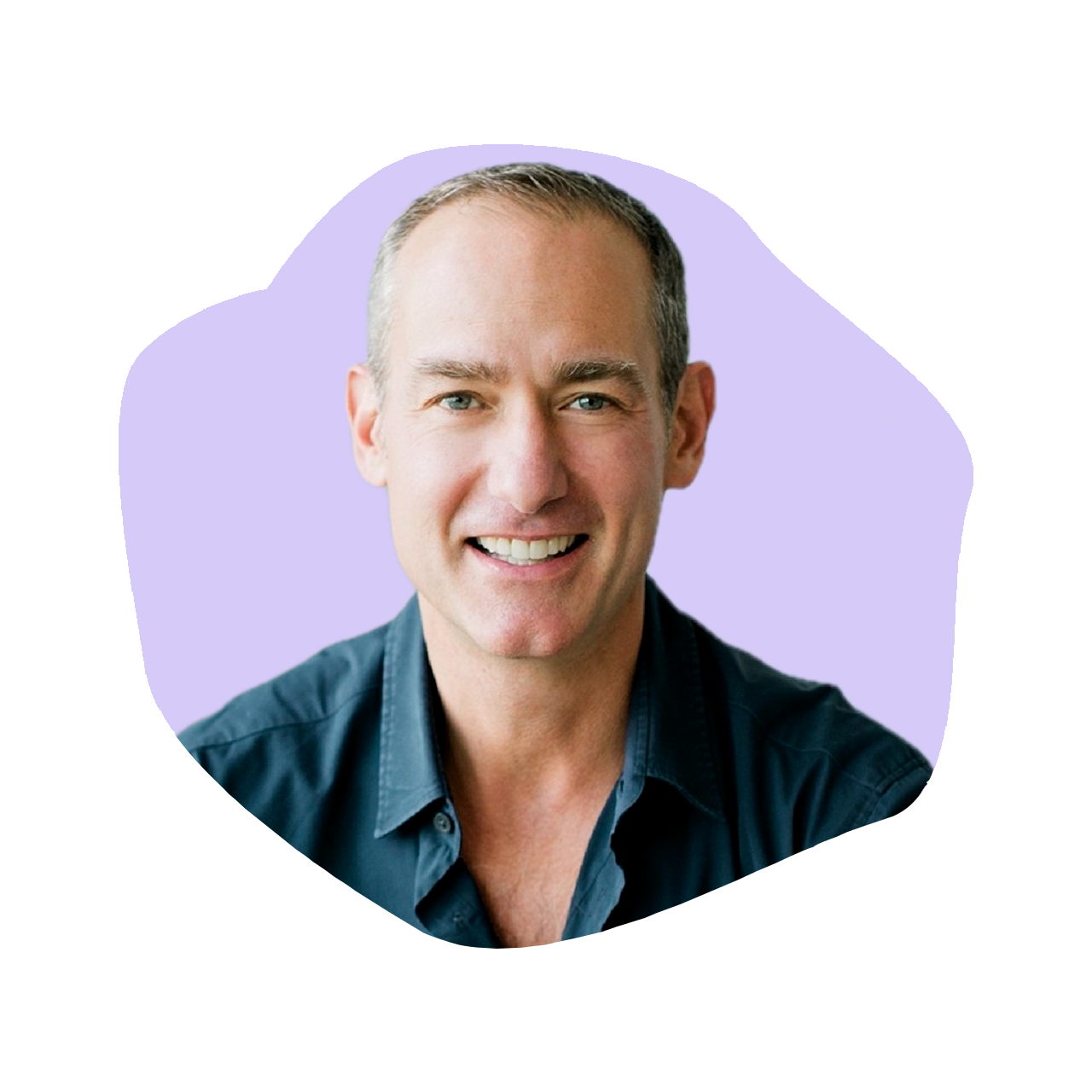
752
Mark Rampolla: Author of An Entrepreneur’s Guide to Freedom and Founder of ZICO
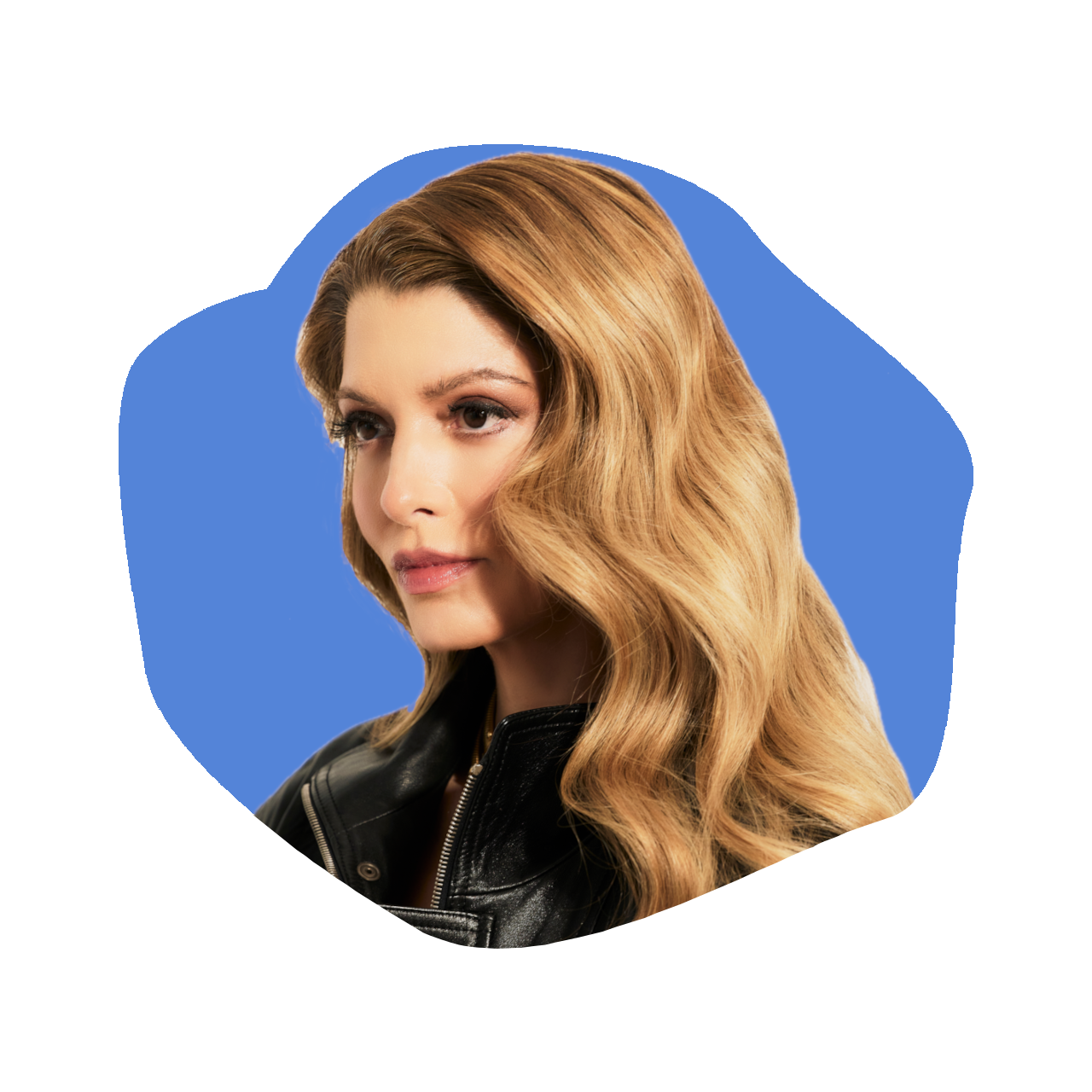
751
Deborah Pagani: Founder of Deborah Pagani Beauty
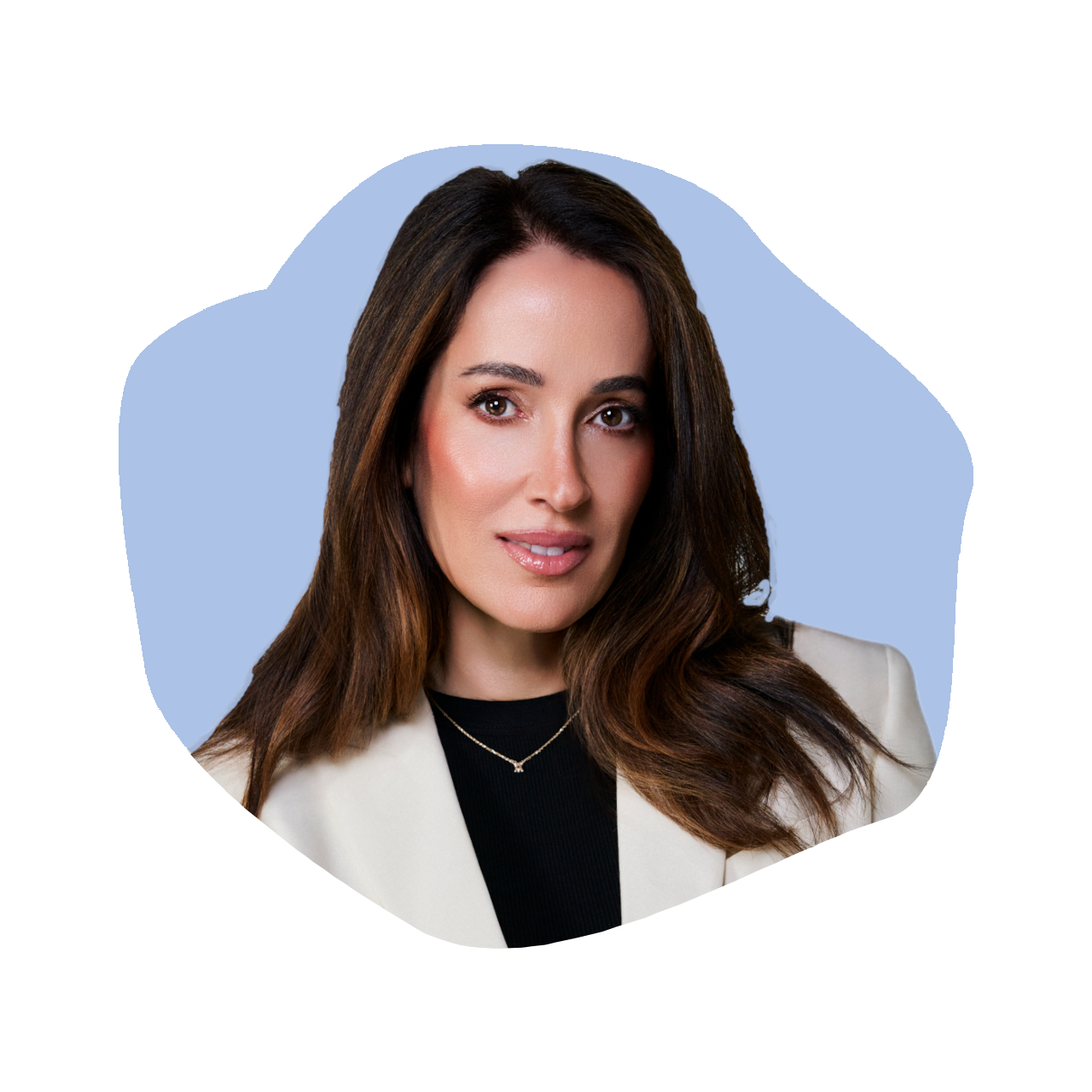
750
Angela Caglia: Founder & CEO of Angela Caglia Skincare
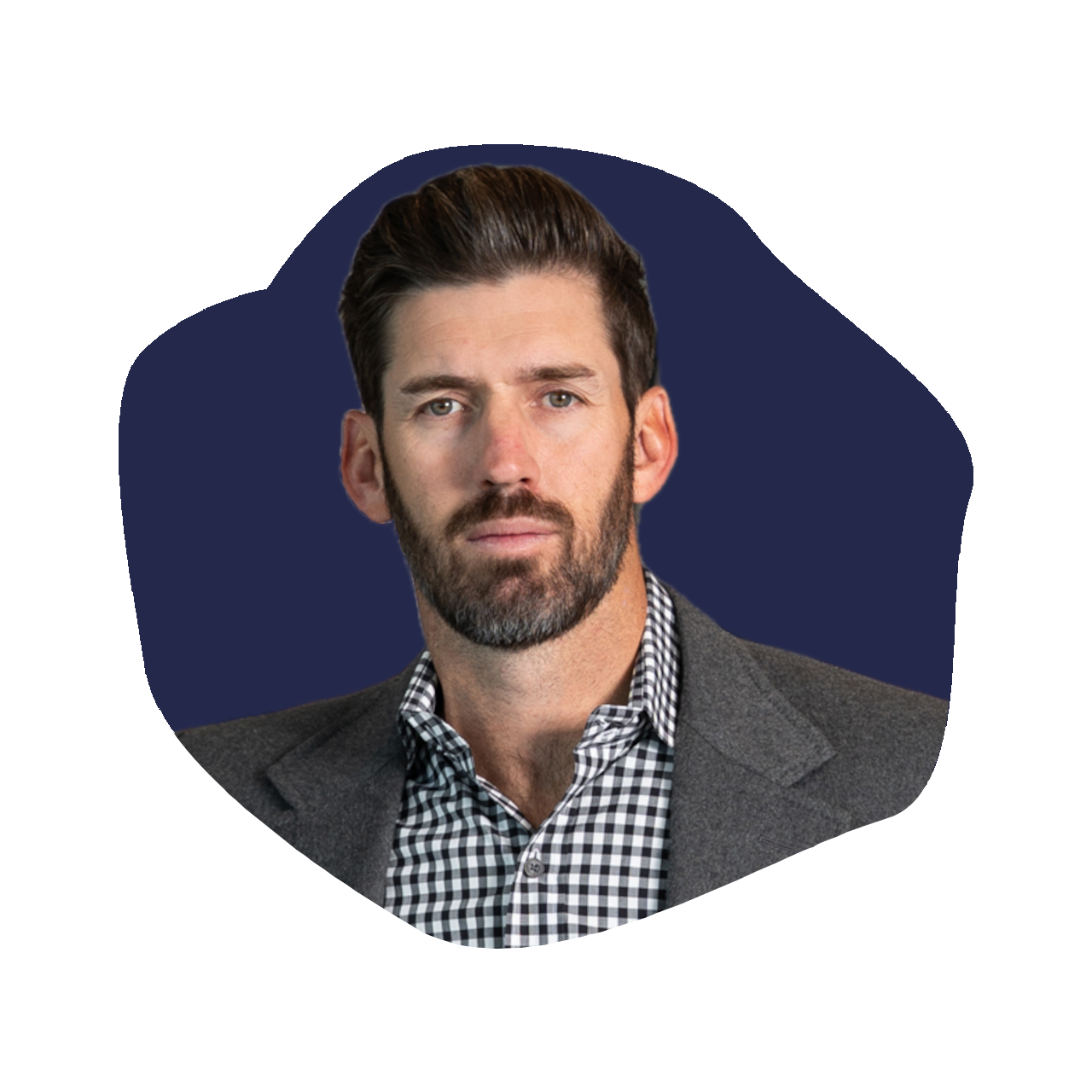
749
Doss Cunningham: Chairman & CEO of Nutrabolt

748
Cheree Ashley: Founder & CEO of Osier




